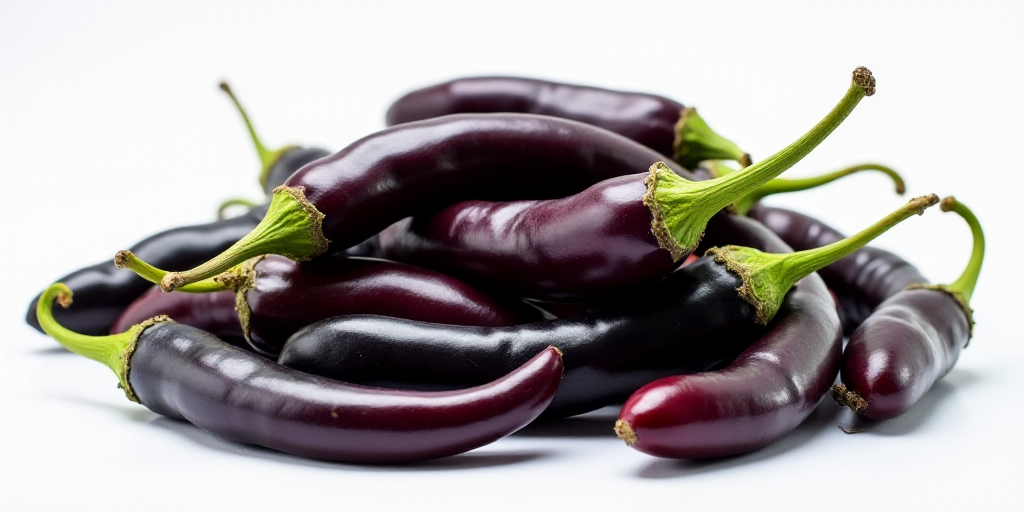Origins and Tradition of the Most Expensive Chile in Mexico
Chilhuacle: A Mysterious and Valued Chile in Mexico
The chilhuacle, derived from the Nahuatl term chilhuacle, meaning “chile viejo” or “chile anciano,” is one of Mexico’s most enigmatic and cherished chiles. Its name reflects its ancient reverence, as it was considered a wise and sacred fruit since pre-Hispanic times. In the Cañada oaxaqueña communities, its origins intertwine with myths and stories that position it as a crucial ingredient in ritualistic cuisine.
Heart of the Black Mole
The chilhuacle negro is perhaps its most recognized form. This chile forms the soul of the mole negro, considered one of Mexico’s most complex and representative dishes. Its deep, slightly sweet, and smoky flavor cannot be replaced by any other ingredient. In towns like Cuilápam de Guerrero or Cuicatlán, when authentic chilhuacle mole is prepared, it’s said that “the dish has spirit.”
The chilhuacle thrives exclusively in the Cañada oaxaqueña region, a warm and dry corridor with precise soil and climate conditions. Its cultivation is delicate, requiring manual care, precise irrigation, and heirloom seeds passed down through generations.
These conditions make it scarce and highly valued, with prices surpassing those of vanilla or saffron, making it the most expensive chile in Mexico.
A Tradition at Risk
Producers in the Cañada cultivate chilhuacle in small plots, often using traditional methods that respect agricultural cycles and local biodiversity. However, climate change, pests, and lack of economic incentives threaten its continuity.
Each year, the harvest becomes more limited, making it a luxury ingredient reserved for special occasions or high-end culinary tables.
The chilhuacle symbolizes cultural heritage, representing the memory of indigenous peoples, culinary tradition continuity, and Oaxaca’s identity. In community festivities, preparing mole negro with authentic chilhuacle is a way to honor ancestral heritage and express pride in local cuisine.
Today, there are initiatives to rescue and protect the chilhuacle cultivation. These include gastronomic projects recognizing farmers’ work, conservation and revaluation of native seed programs, and efforts by Mexican and international chefs to use it for its unique flavor and the historical and cultural significance it carries in each dried pod.
Key Questions and Answers
- What is chilhuacle? Chilhuacle is a highly valued and mysterious Mexican chile, known for its deep, slightly sweet, and smoky flavor. Its name comes from the Nahuatl term “chilhuacle,” meaning “chile viejo” or “chile anciano.”
- Why is chilhuacle so expensive? Chilhuacle’s scarcity stems from its specific growing conditions in the Cañada oaxaqueña region, requiring manual care, precise irrigation, and heirloom seeds. Its high value surpasses that of vanilla or saffron, making it the most expensive chile in Mexico.
- What is the significance of chilhuacle in Mexican cuisine? Chilhuacle is crucial to the mole negro, one of Mexico’s most complex and representative dishes. Its unique flavor cannot be replaced, making it an essential ingredient in this traditional recipe.
- What threats does chilhuacle cultivation face? Climate change, pests, and lack of economic incentives threaten chilhuacle cultivation. As a result, its harvest becomes more limited each year, making it a luxury ingredient.
- Why is chilhuacle culturally significant? Chilhuacle symbolizes the memory of indigenous peoples, culinary tradition continuity, and Oaxaca’s identity. Preparing mole negro with authentic chilhuacle is a way to honor ancestral heritage and express pride in local cuisine.






